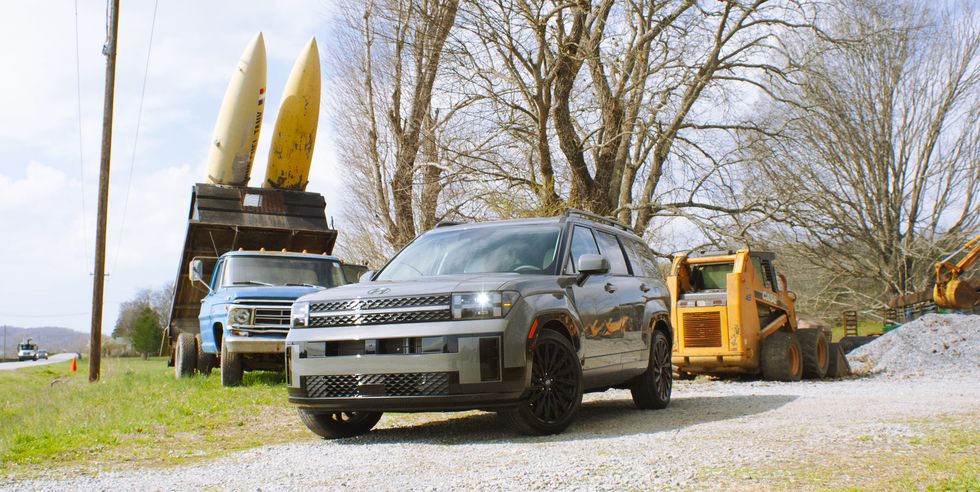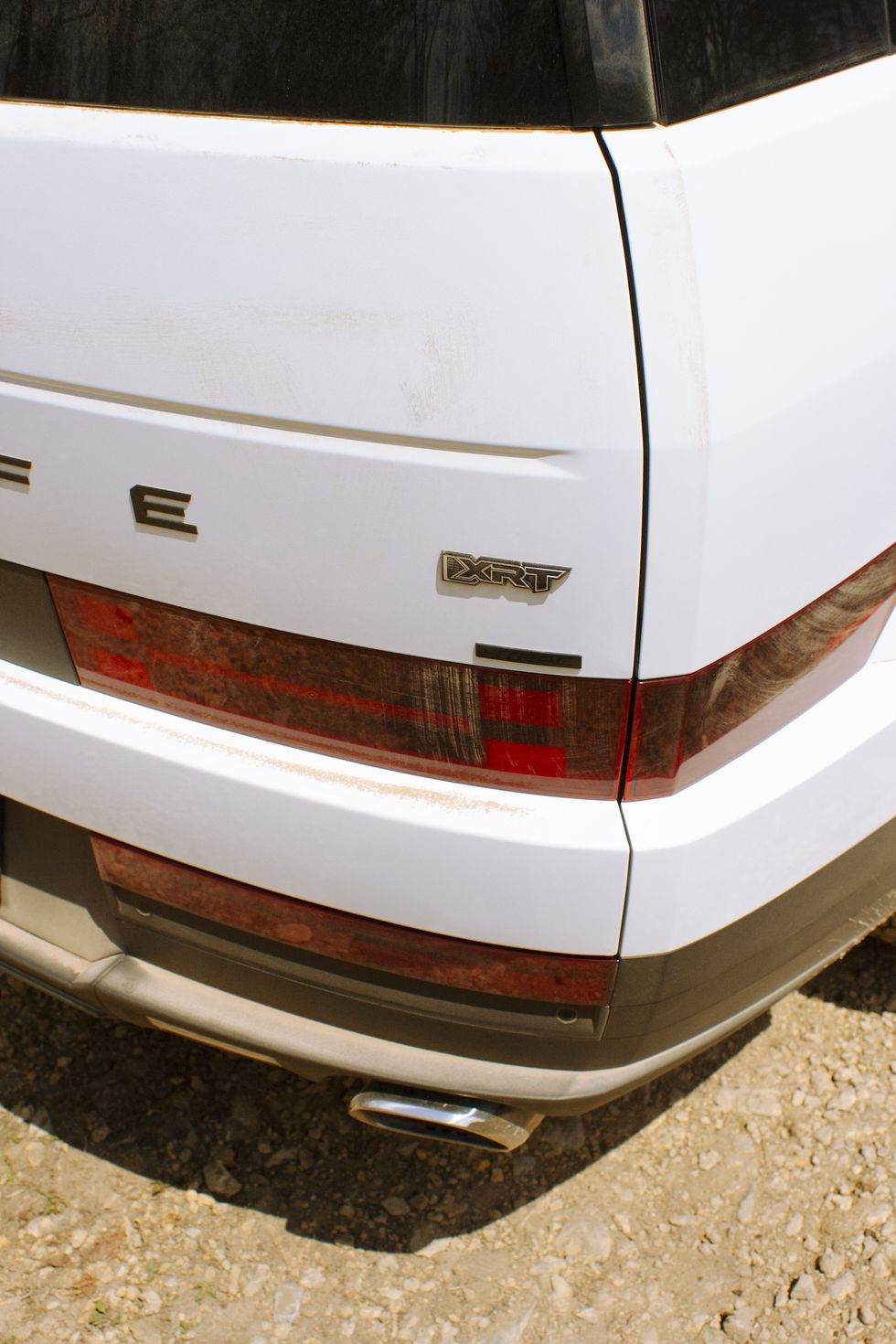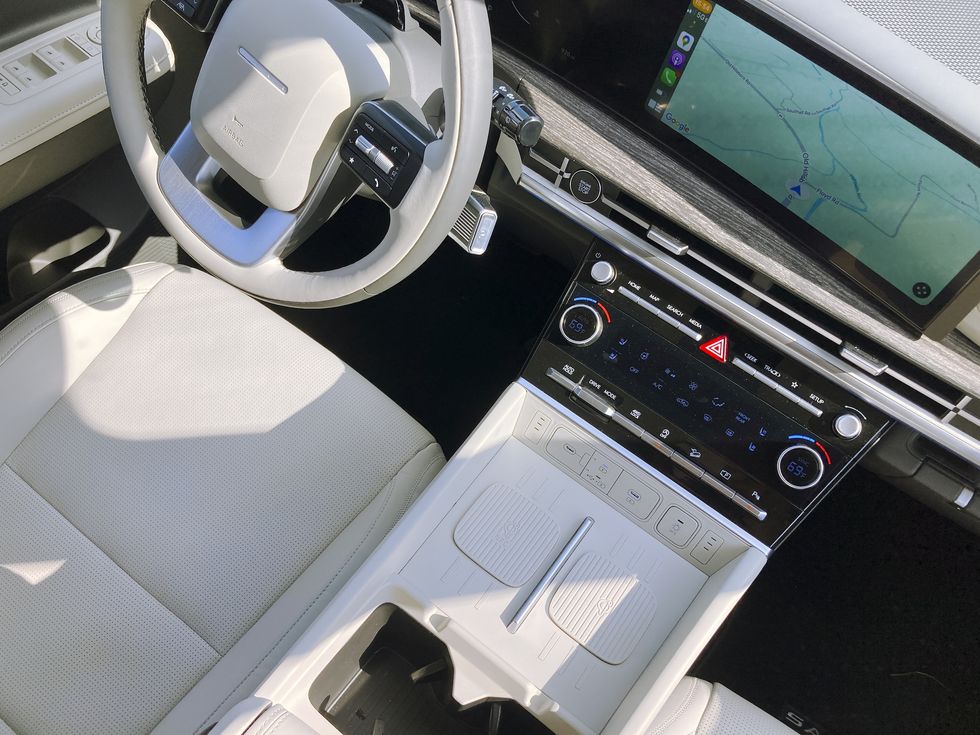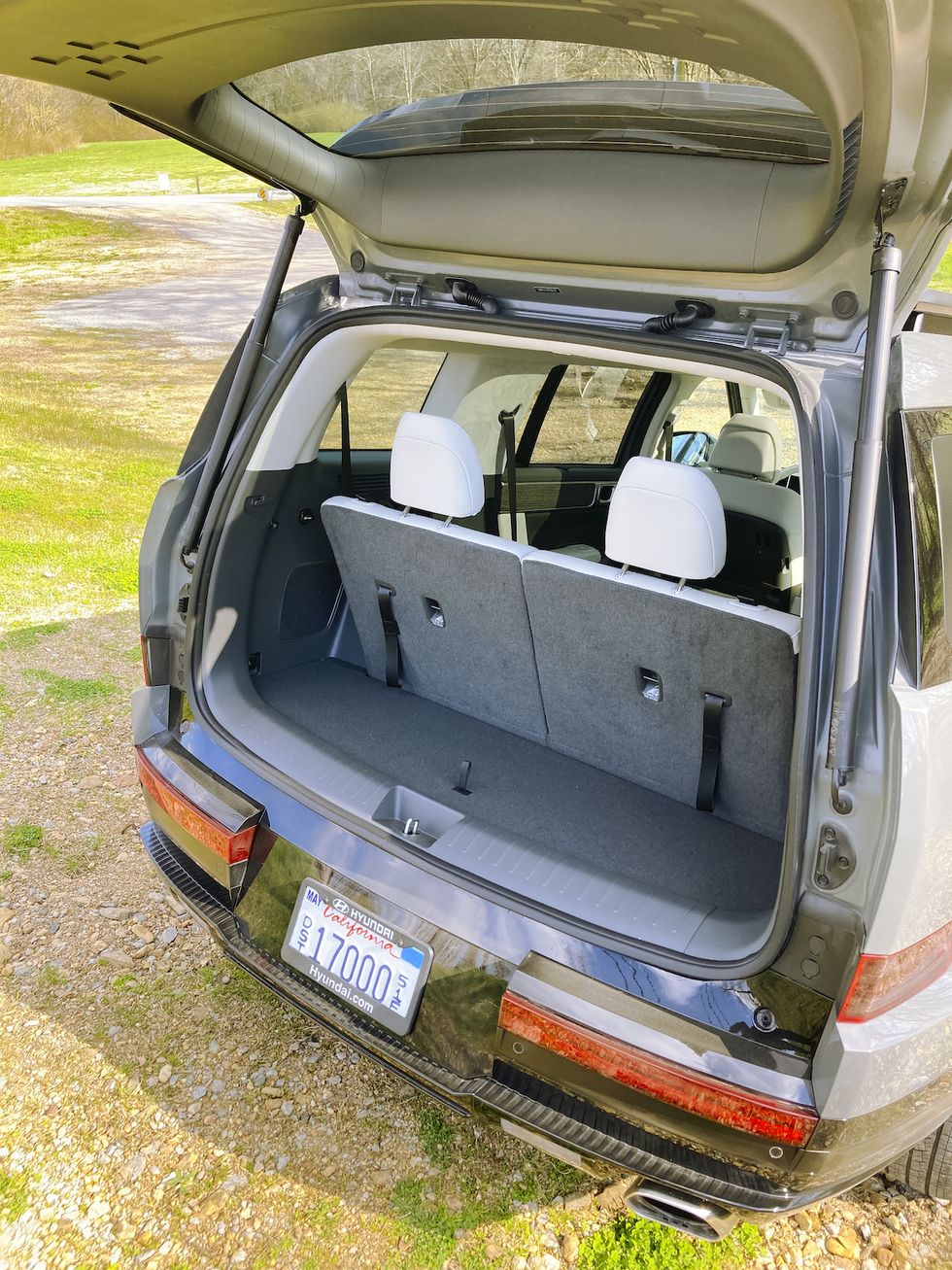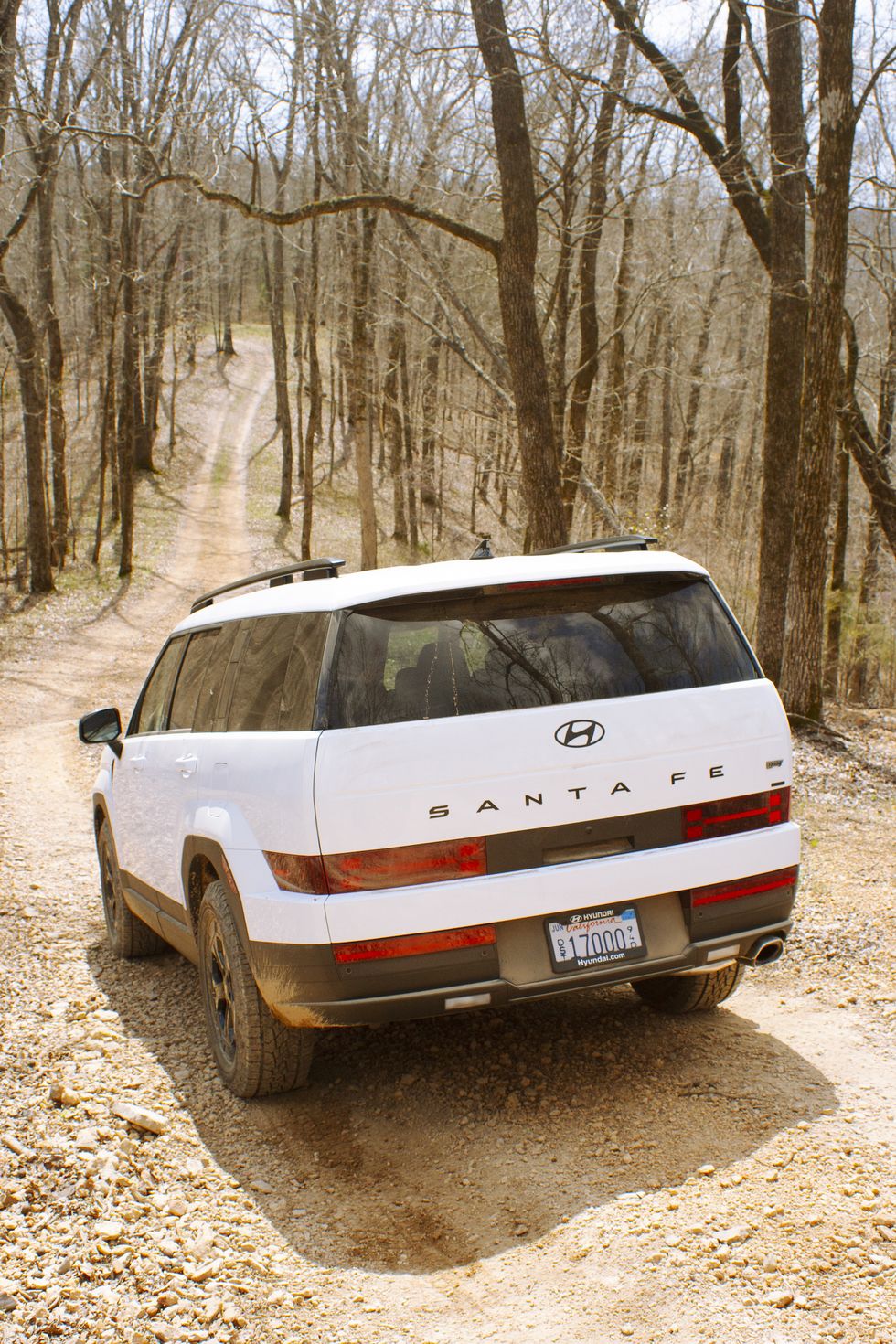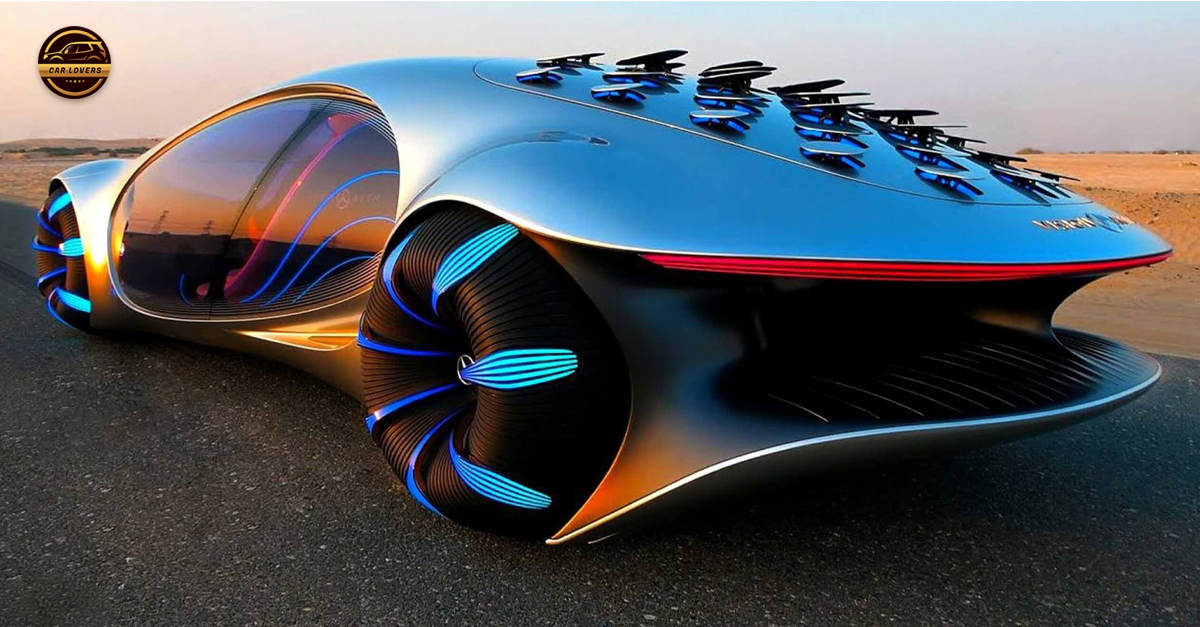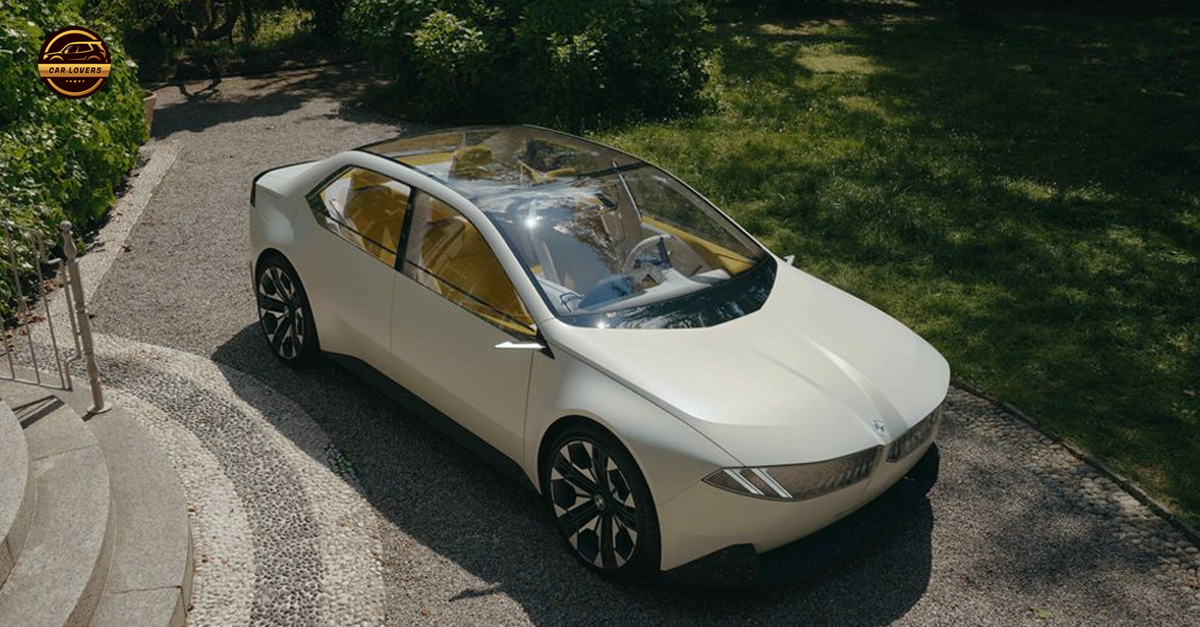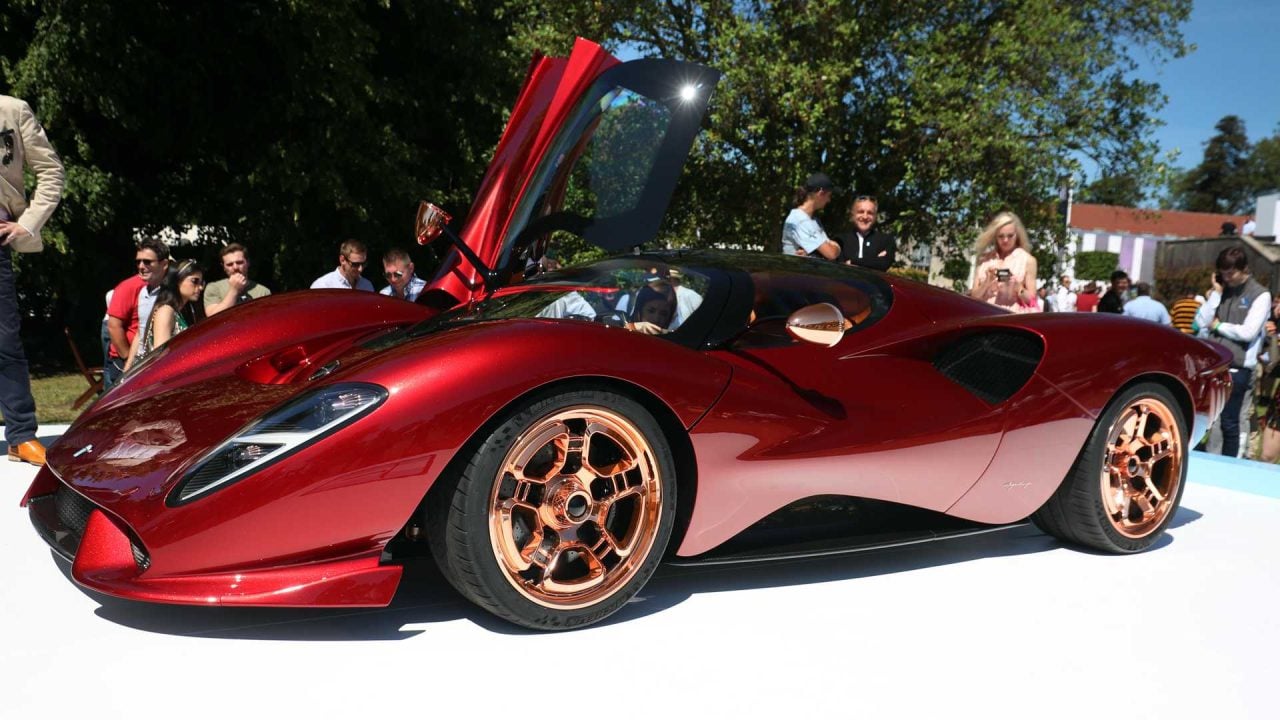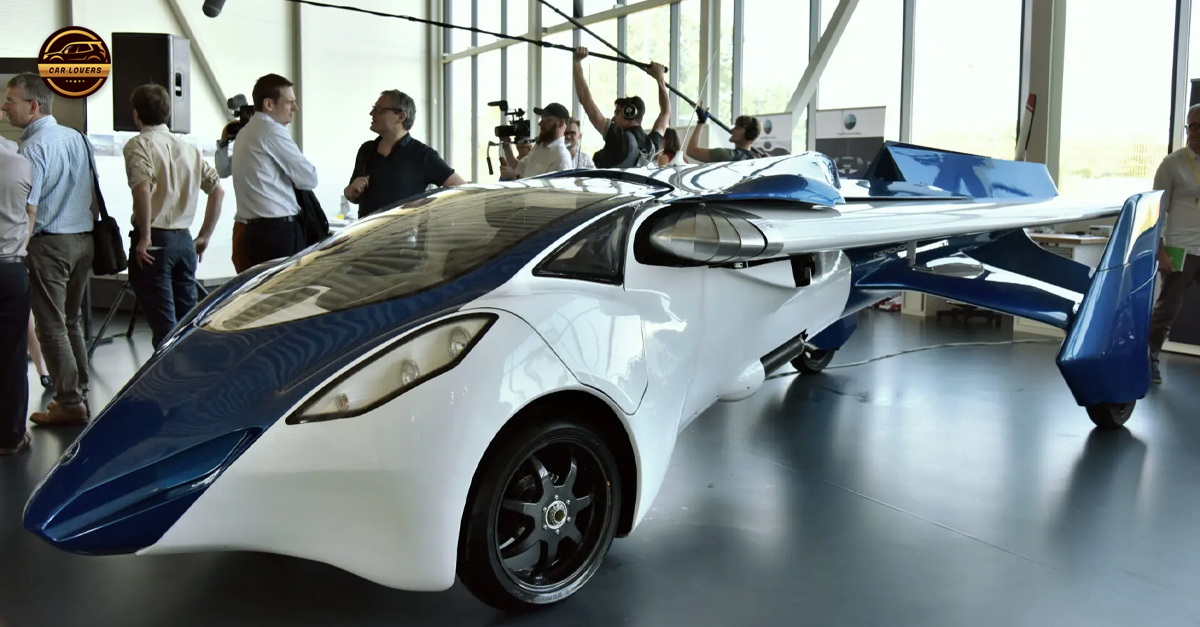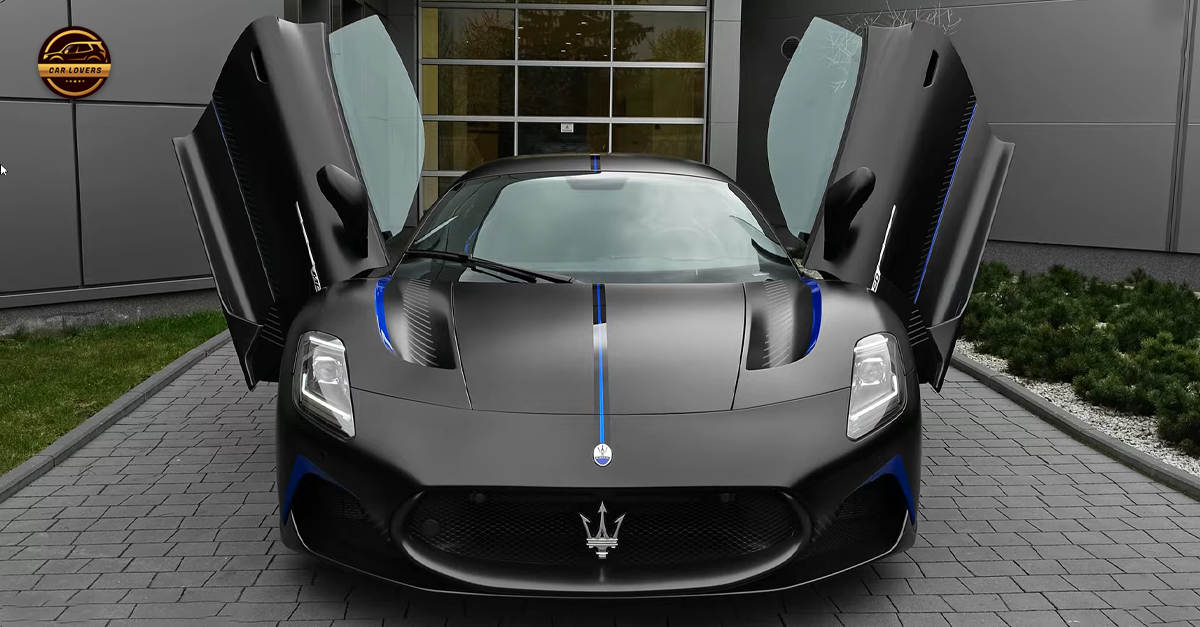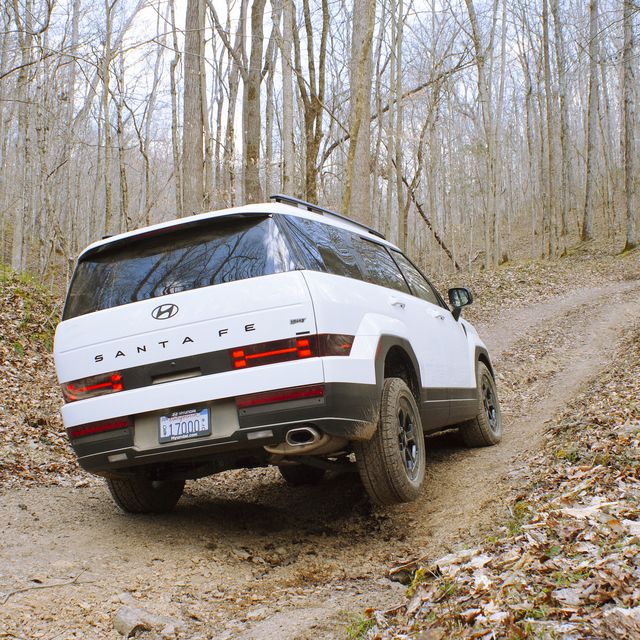
RAPHAEL ORLOVE
The early spring sun pressed down on us like a toddler testing its strength, not yet the full power of summer that would soon swelter these Tennessee hills, the grass green and the trees bare. We lazily wound along the brook beside us, blue like the sky, when the car shook. My passenger in the back seat, lounging after our barbecue lunch, was hoping a stiff breeze would wake him up, but it was no use. I cracked my window a hair and soon he was napping again, comfortable as a person can be.
That’s the selling point of the Hyundai Santa Fe. It might look like a truck but it doesn’t drive like one. It’s not crashy, even when these rural roads start to break up into ruts and potholes. There’s something a bit like a spa in the interior, too. It’s all cream white over black in this top-trim Calligraphy model, knocking on the door of $50,000.
This Hyundai looks nice. Hyundais have looked good for a while now. It’s nice to know that this one drives nicely, too, even on its gigantic wheels, even with its boxy styling.
The 2.5-liter turbo four has a charming growl to it as you pull away from a country intersection, waving to the cows and horses and donkeys we pass again and again. The eight-speed dual-clutch transmission never hunts for gears, as calm and composed as the rest of the car. Power is 277 hp with 311 lb-ft of torque. Against 4486 pounds, it’s not a quick machine, but it moves. It’s also an easy car to drive in that it’s long, sure, but not all that wide, with big flush windows all around.
Visibility is good over your shoulder, and you don’t tower over the road like you do in, say, a Land Rover Defender. If anything, if you see a Defender sharing a mall parking lot with you, know that you had an easier time parking than they did.
It’s hard to pick a fault with the new Santa Fe.
You shouldn’t really, should you? This is the priciest version of a pricier car. It’s five grand extra that Hyundai has stacked onto the Santa Fe versus the previous generation. I wondered if that would have all been spent on making the car’s looks. It’s heartening that the substance matches up with the style.
Because the style is really something notable about this thing. It’s still sort of hard to believe that this is a new car, that will be sold in America, with ‘Santa Fe’ spelled out across the blocky back.
The rest of the vehicle is of high quality. I loved the feel of all of the switchgear, and was charmed by the center storage cubby that can be opened by both front and rear passengers, opening up all kinds of possibilities for your kids and/or buddies to mess with you while you’re driving.
Also charming is that the Santa Fe does not have a side ladder, but a much cuter recessed handle in the side pillar. Step on the tire and use it to pop up onto the roof of the car for easy access to any gear you have stored up there.
Getting back to the question of pricing, it’s notable that even the cheapest Santa Fe starts at $50 shy of $34,000. The lowest-level FWD Calligraphy begins at $46,500 and it’s $48,300 for AWD. This particular car added $210 floor mats, but a $1395 destination fee put it to $49,905. There is a charm in a Hyundai being this nice, inside and out, but it comes with a real cost.
It’s also worth noting that the hybrid model, FWD with a 1.6-liter, adds a $500 premium to either of those figures. The hybrid adds another half of the car’s MPG to itself, bumping up from the mid-20s to the mid-30s, 24 to 36 MPG in the best case. MPG ratings more exactly are 20/29/24 for a FWD gas model and 36/35/36 for the equivalent hybrid. For AWD, bump things down one unit for 20/28/23 against 35/34/34.
Hyundai doesn’t have hybrid production ready and we’ll have to wait for it to go on sale in a few months.
Yet more curious is that Hyundai has no plans to do a plug-in hybrid for the Santa Fe. Hyundai said it’s “focusing on plug-in for Tucson,” which makes some sense. The Tucson outsells the Santa Fe, and if a company is going to choose one or the other, go with that one. Still, a plug-in hybrid system is a wonder for a three-row family hauler. It means your day-to-day errands and school runs can be done on battery alone, while leaving you still open to take the kids camping in the mountains without worrying about your range. The company told us that it expects 35-40 percent of buyers to opt for the hybrid version once it’s available, at least.
Hyundai was also rather bullish about its XRT off-road version, with metal skidplates, Continental A/Ts, and a 1″ suspension lift. Combined with the taller tires, it sits 1.3 inches higher than standard, and it did successfully make it through the Bells Reserve off-road park course; not unlike what you’d find getting to your friend’s hunting cabin in the woods down some sometimes-washed-out road. It slipped a lot of tire, but it got to where it needed to go, so long as you kept traction control firmly “on.” It’s open diffs front and back, and the Santa Fe relies on its electronic brain to engage the brakes to make sure the car goes forward with a wheel in the air. That’s even with the “AWD lock” button on, locking the car into AWD mode, not locking any differential.
But again, the Santa Fe is more a vehicle that looks like a truck. It doesn’t thud or shake or shudder down the road like a real truck, so don’t be surprised if it doesn’t excel off the road either. It is roomy, stylish, and its long floor folds completely flat. Fill it up with furniture, camp in there, whatever. It’s not the cheapest car on sale, but it’s as good to drive as it looks.

